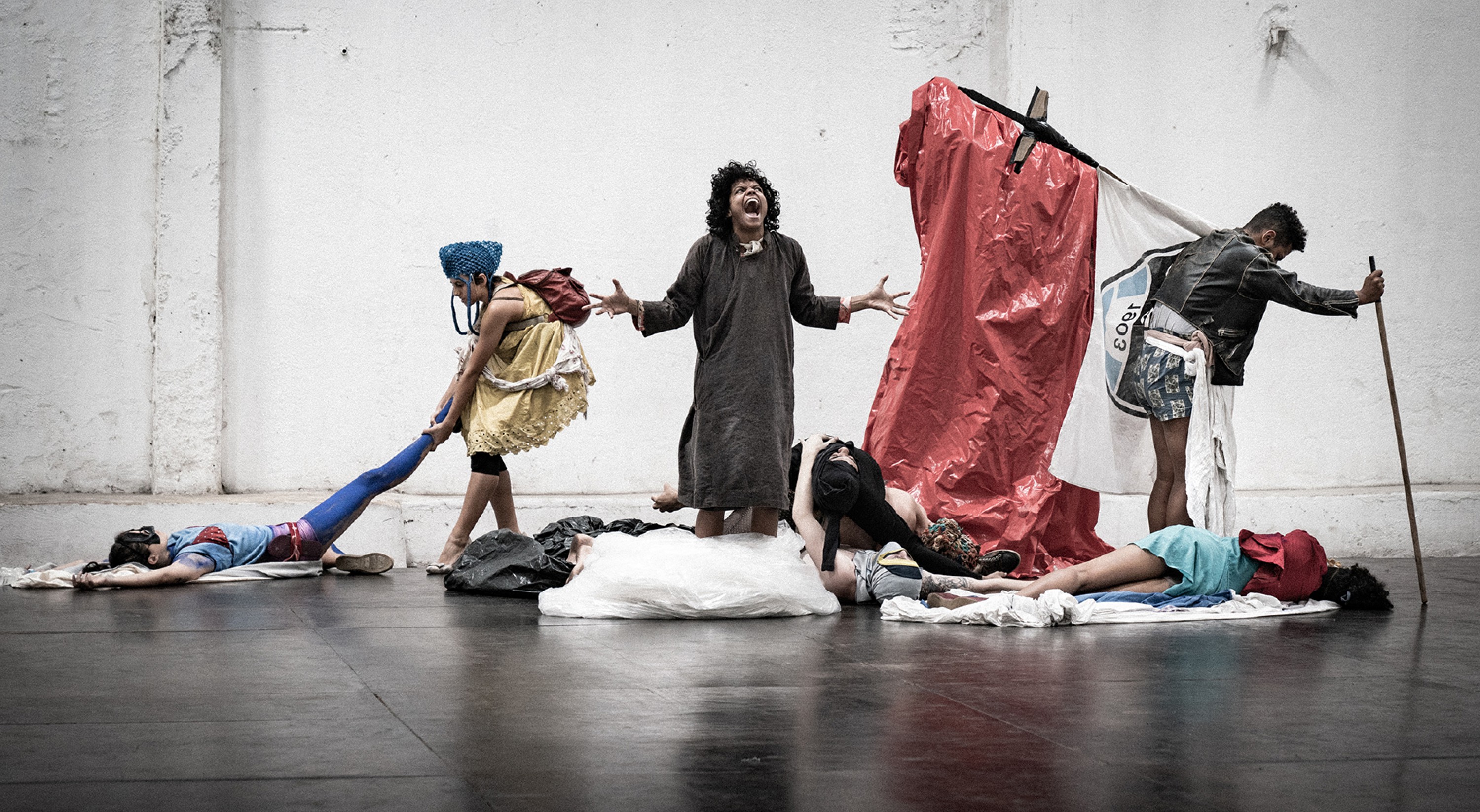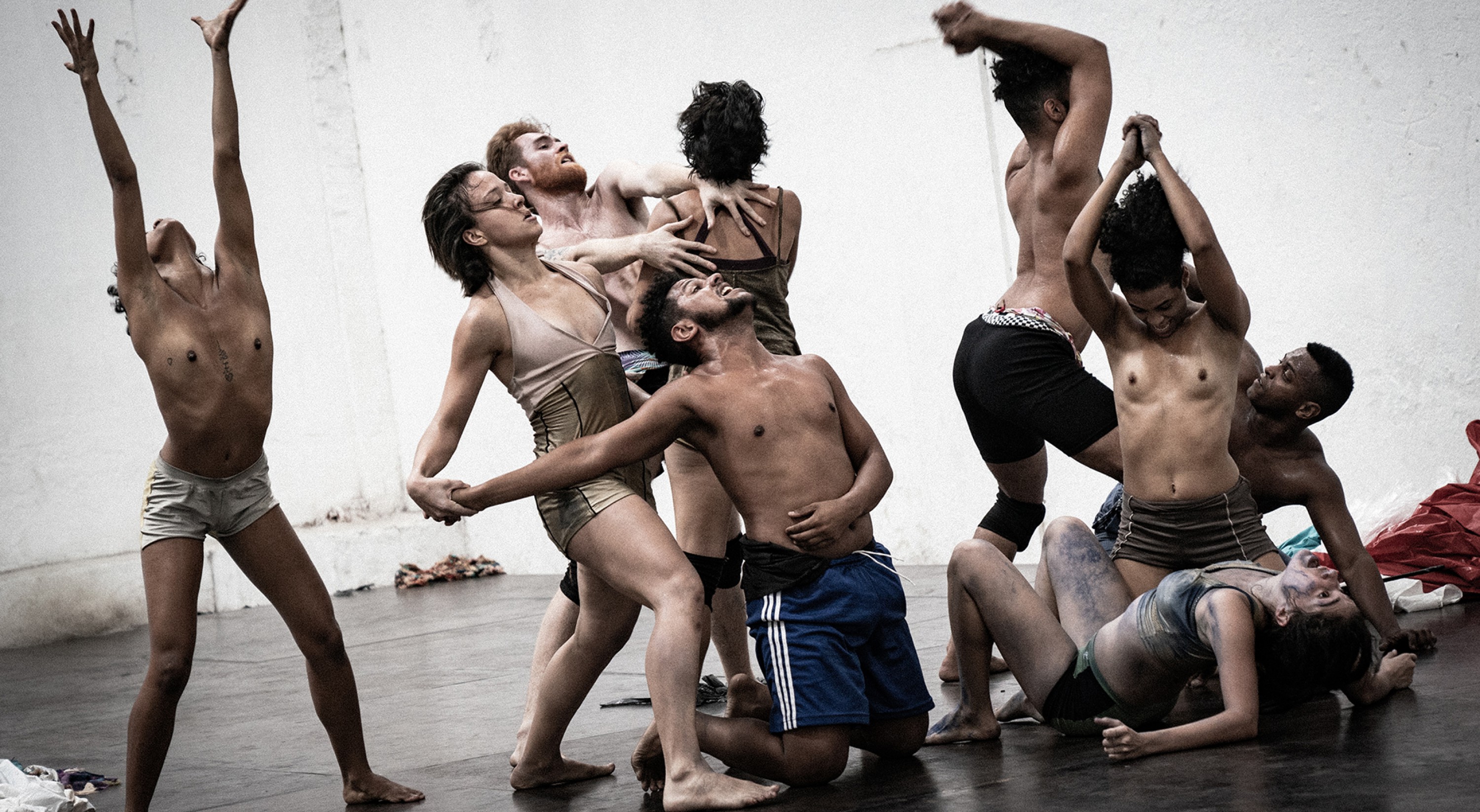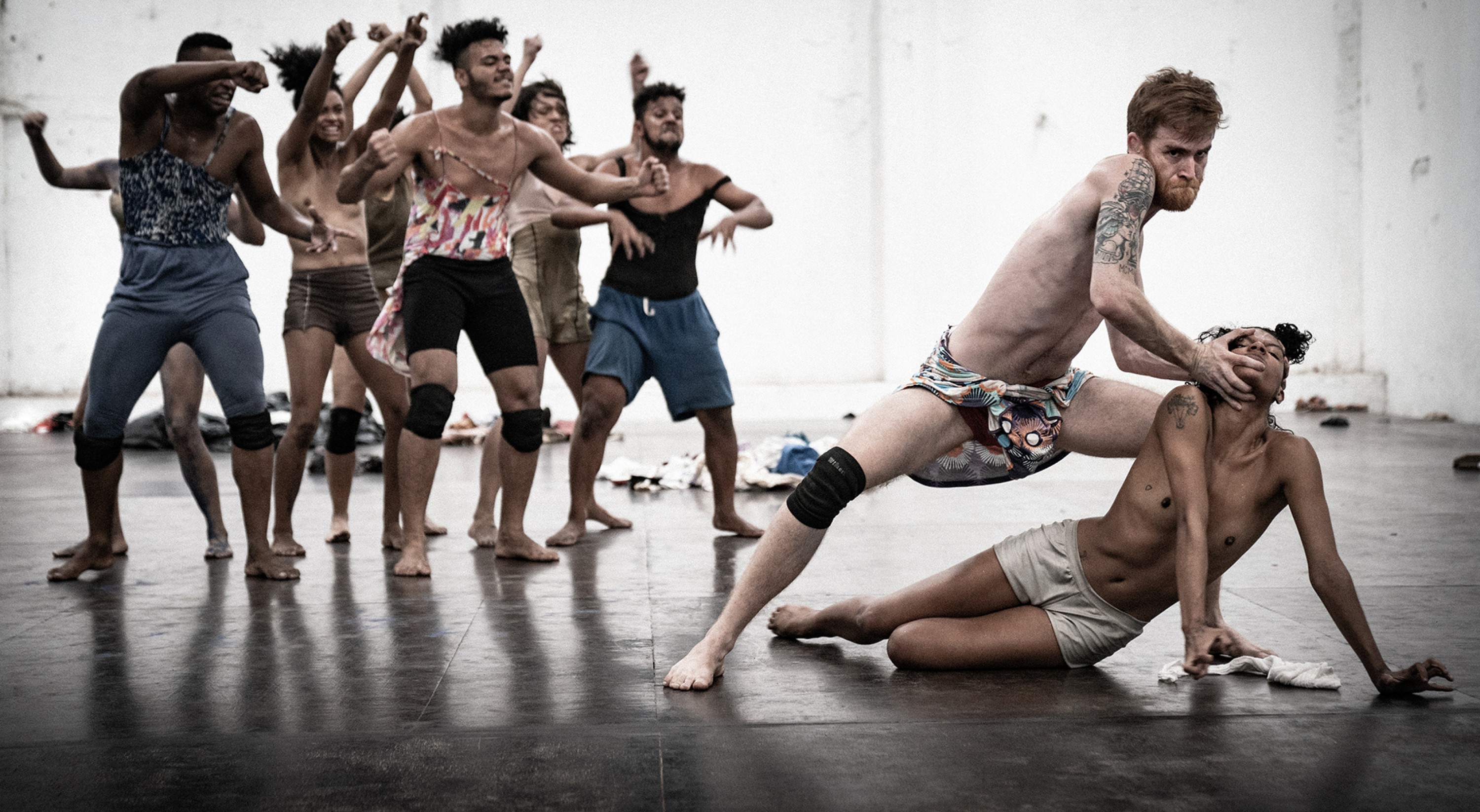Lia Rodrigues
Fúria
novembernov 30 - december – dec 30
decemberdec 12 – 15
Choreography, Lia Rodrigues
Dramaturgy, Silvia Soter
Lighting design, Nicolas Boudier
Artisitic collaboration and images, Sammi Landweer
Assistant Choreography, Amalia Lima
Dancers, Leonardo Nunes, Felipe Vian, Clara Cavalcanti, Carolina Repetto, Valentina Fittipaldi, Andrey Silva, Karoll Silva, Larissa Lima, Ricardo Xavier
A production by Chaillot – Théâtre national de la Danse (Paris)
With support from Fondation d’entreprise Hermès as part of its New Settings programme
A coproduction by Lia Rodrigues Companhia de Danças ; MA Scène nationale – Pays de Montbéliard ; Künstlerhaus Mousonturm Frankfurt am Main as part of the FRANKFURTER POSITIONEN 2019 Festival ; Le CENTQUATRE-PARIS ; and Festival d’Automne à Paris // In association with Chaillot – Théâtre national de la Danse (Paris) ; and Festival d’Automne à Paris for performances at Chaillot – Théâtre national de la Danse (Paris)
In association with Le CENTQUATRE-PARIS ; and Festival d’Automne à Paris for performances at CENTQUATRE-PARIS
With support from Adami
Lia Rodrigues is associate artist at Chaillot – Théâtre national de la Danse (Paris) et au CENTQUATRE-PARIS.
First performance on 30 November 2018 at Chaillot – Théâtre national de la Danse (Paris) in conjunction with Festival d’Automne à Paris
Following on from her preceding piece, Para que o céu nao caia (For the sky not to fall), Lia Rodrigues puts the paradoxes of otherness to work once again and incubates them at the heart of a group of nine dancers. Alternating between savage multitude and sum total of individuals, this mutating collective invents and travels across worlds run through with dazzling images.
In the eyes of the Brazilian choreographer Lia Rodrigues, the group is an entity in its own right: a malleable matter capable of changing from one state to another, in the same way as a liquid or solid element. In the course of pieces such as her Brazilian trilogy - Pororoca, Piracema and Pindorama - she shapes experiments on the frontier between ritual, dance, performance and installation. Similar to the work of artists such as Lygia Clark, the collective substance that she models extends beyond the formal framework in order to touch upon the idea of the reinvention of a social body bonding with its primitive energies. After Para que o céu nao caia, she once again sets down the conditions of a material ecstasy, digging deep into the innermost zones of the human psyche. What does it mean to have a body? Is it about having a mouth for speaking, or shouting? Or limbs for grasping, hitting, or clinging to another body? By following their “delicate radar” - in the words of the Brazilian author Clarice Lispector - a group of nine dancers set off on an adventure, transforming the stage into a fragile and fluctuating territory. Switching between pack-like group, autonomous organism and sum total of individuals left to confront themselves with the loneliness of their flesh, they attempt to create different worlds - and to turn the stage into a universe which is run through with paradoxes, held up by images which tear through the veil of familiar reality.
––––––
Estimated running time : 1h
In the same place


